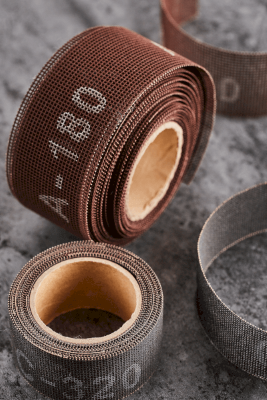What Is Alumina Fiber?
 Alumina Fiber is a fibrous material composed mainly of alumina (aluminum oxide). It is used in various industrial fields because of its high resistance to high temperatures and refractoriness.
Alumina Fiber is a fibrous material composed mainly of alumina (aluminum oxide). It is used in various industrial fields because of its high resistance to high temperatures and refractoriness.
Alumina Fiber is made from alumina, which is spun at high temperatures and then calcined at high temperatures to form fibers. Generally, the fiber diameter is a few micrometers, and it is very light, refractory, and strong.
Because it is often used under high temperatures, it has excellent heat resistance and thermal insulation properties. It is also chemically stable and highly resistant to corrosion.
Uses of Alumina Fiber
The main applications of alumina fiber are as follows:
1. Refractory Materials
Examples include glass furnaces, ceramic furnaces, blast furnaces for steel, cement kilns, refractory bricks and refractory cement.
Alumina Fiber is used as a refractory material because of its high temperature resistance and excellent refractoriness. Alumina fiber is also flexible and easy to process, so it can be cut and pasted according to its shape.
2. High-Temperature Insulation Material
Examples include heat treatment furnaces, casting furnaces, paper machines, glass furnaces, heat insulators for molten metal, tanks, and pipelines.
Alumina Fiber has high thermal insulation performance and is used to reduce heat transfer at high temperatures. In addition, it is lightweight and flexible, and can be freely processed to adapt to a variety of shapes.
3. Electrical Insulating Materials
Examples include electric furnaces, transformers, capacitors, fuses, and wires.
Alumina Fiber is used as an electrical insulator because of its high voltage resistance and low conductivity. In addition, it has excellent durability and can withstand long-term use.
4. Reinforcement Material for Mechanical Parts
Examples include aircraft, automobiles, and rolling stock.
Alumina Fiber is used as a reinforcement material for mechanical parts because of its high strength, light weight, and durability. It also has excellent abrasion and corrosion resistance, thus extending the service life of mechanical parts.
Properties of Alumina Fiber
Alumina Fiber has the following properties:
1. Heat Resistance
Alumina has an extremely high melting point of approximately 2,072°C, making it stable under high temperatures. In addition, Alumina Fiber has a dense crystalline structure and the fiber itself is very thin, so the fiber does not deform under high temperatures and retains its strength.
2. Lightweight and Strong
Alumina Fiber is extremely lightweight and strong. Alumina is a very hard material with a dense crystalline structure. It is hard and tough, and the fiber itself is very thin, making it possible to reduce weight.
3. Electrical Insulation Properties
Alumina Fiber is an excellent insulating material and can be made into a fiber and still retain its insulating properties. It is an ionic crystalline material with excellent insulating properties.
An ionic crystalline material is a material with a crystalline structure consisting of a regular arrangement of ions, consisting of cations and anions.
Ions are electrically charged atoms or molecules; cations have a positive electrical charge and anions have a negative electrical charge. Ion-crystalline materials are usually composed of metal and non-metal ions.
Ion-crystalline materials have high crystallinity and strong bonding forces, resulting in properties such as high hardness and melting point, electrical insulation, and thermal conductivity. They are also chemically stable and resistant to acids and alkalis.
4. Corrosion Resistance
Alumina is a very chemically stable material and has excellent corrosion resistance. Alumina fiber likewise has excellent resistance to oxidation and corrosion.
The chemical stability of alumina is due to its crystal structure. Alumina is a compound of aluminum and oxygen, and its crystal structure belongs to the triclinic system. The tricrystalline structure is very rigid and is characterized by a high resistance to chemical attack.
In addition, alumina has a very high melting point and is chemically stable at high temperatures, thus maintaining corrosion resistance even in high temperature environments.
5. Wear Resistance
The tricrystalline crystal structure of alumina is one of the most densely packed structures, so the bonds between atoms are very strong and alumina is a hard material. Therefore, alumina is highly resistant to mechanical loading.
In addition, because alumina has a very dense crystalline structure, there are few micro defects on its surface, making it highly resistant to friction and abrasion. Therefore, alumina fiber is characterized by its high resistance to friction and abrasion between fibers.
Other Information on Alumina Fiber
Processability of Alumina
Alumina Fiber is very hard and its diameter is extremely fine, making it difficult to cut and process. Special techniques and equipment are required to process alumina fibers because cutting shortens the fibers. Also, because the fibers are very fine, care must be taken when handling them. The fibers may scatter when processed.
Alumina Fiber tends to become brittle when exposed to high temperatures for long periods of time. The reason is that the fiber oxidizes in a high-temperature environment, resulting in an increase in fine crystal particles, which makes the fiber brittle. Therefore, care must be taken when using alumina fiber depending on the environment in which it is used. For example, the fiber should not be exposed to high temperatures for long periods of time, a coating should be applied to protect the fiber, and regular inspection and maintenance should be performed.